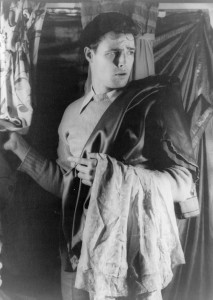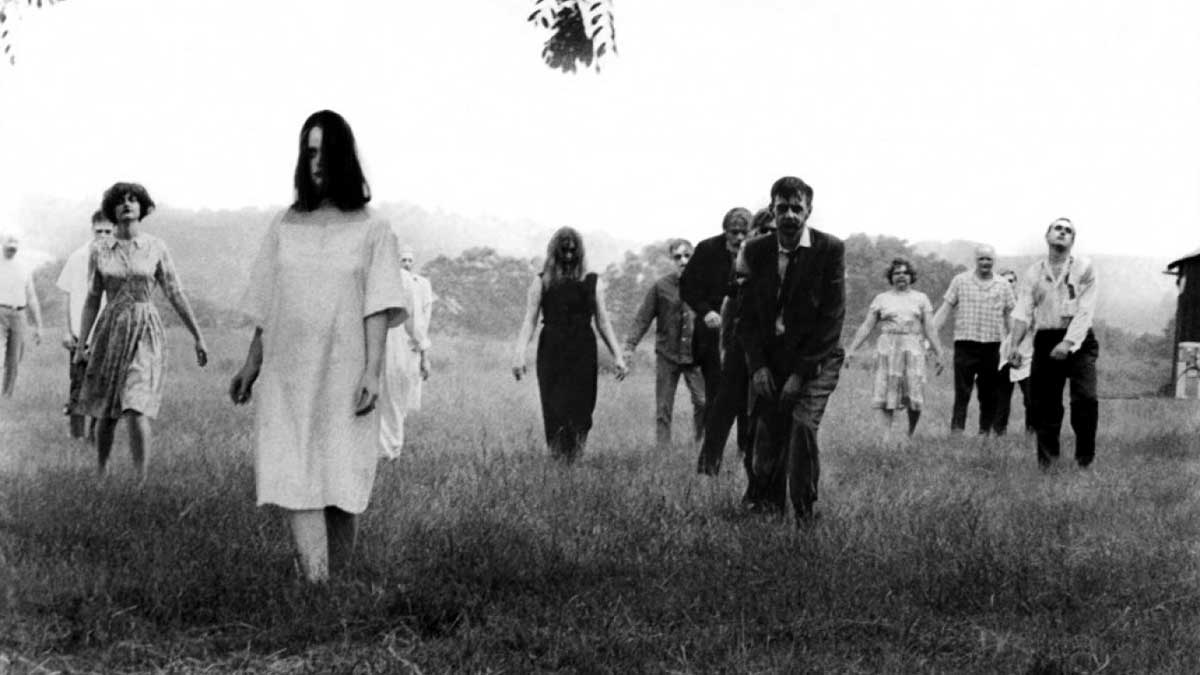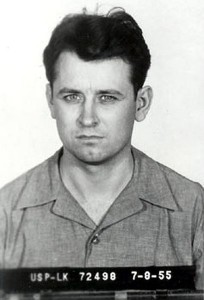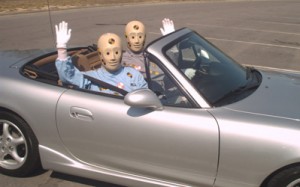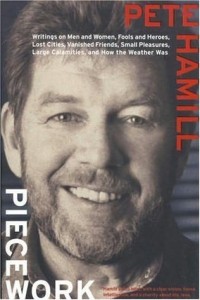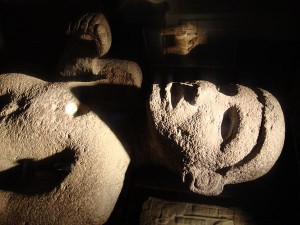Yotel opens in Manhattan in June. (Thanks Singularity Hub.)
Longform made an incredible find with “The Duke In His Domain,” a 1957 New Yorker profile of Marlon Brando by Truman Capote. The former was already an icon thanks to Streetcar, The Wild One and On the Waterfront; the latter was still roughly a decade from publishing his masterpiece, In Cold Blood. Capote traveled to the set of Sayonara in Tokyo to interview Brando, who was at the start of a long personal decline, still somewhat accessible but increasingly less so. An excerpt:
“The maid had reëntered the star’s room, and Murray, on his way out, almost tripped over the train of her kimono. She put down a bowl of ice and, with a glow, a giggle, an elation that made her little feet, hooflike in their split-toed white socks, lift and lower like a prancing pony’s, announced, ‘Appapie! Tonight on menu appapie.’
Brando groaned. ‘Apple pie. That’s all I need.’ He stretched out on the floor and unbuckled his belt, which dug too deeply into the swell of his stomach. ‘I’m supposed to be on a diet. But the only things I want to eat are apple pie and stuff like that.’ Six weeks earlier, in California, Logan had told him he must trim off ten pounds for his role in Sayonara, and before arriving in Kyoto he had managed to get rid of seven. Since reaching Japan, however, abetted not only by American-type apple pie but by the Japanese cuisine, with its delicious emphasis on the sweetened, the starchy, the fried, he’d regained, then doubled this poundage. Now, loosening his belt still more and thoughtfully massaging his midriff, he scanned the menu, which offered, in English, a wide choice of Western-style dishes, and, after reminding himself ‘I’ve got to lose weight,’ ordered soup, beefsteak with French-fried potatoes, three supplementary vegetables, a side dish of spaghetti, rolls and butter, a bottle of sake, salad, and cheese and crackers.
‘And appapie, Marron?’
He sighed. ‘With ice cream, honey.’
Though Brando is not a teetotaller, his appetite is more frugal when it comes to alcohol. While we were awaiting the dinner, which was to be served to us in the room, he supplied me with a large vodka on the rocks and poured himself the merest courtesy sip. Resuming his position on the floor, he lolled his head against a pillow, drooped his eyelids, then shut them. It was as though he’d dozed off into a disturbing dream; his eyelids twitched, and when he spoke, his voice—an unemotional voice, in a way cultivated and genteel, yet surprisingly adolescent, a voice with a probing, asking, boyish quality—seemed to come from sleepy distances.
‘The last eight, nine years of my life have been a mess,’ he said. ‘Maybe the last two have been a little better. Less rolling in the trough of the wave. Have you ever been analyzed? I was afraid of it at first. Afraid it might destroy the impulses that made me creative, an artist. A sensitive person receives fifty impressions where somebody else may only get seven. Sensitive people are so vulnerable; they’re so easily brutalized and hurt just because they are sensitive. The more sensitive you are, the more certain you are to be brutalized, develop scabs. Never evolve. Never allow yourself to feel anything, because you always feel too much. Analysis helps. It helped me. But still, the last eight, nine years I’ve been pretty mixed up, a mess pretty much.'”
••••••••••
Dick Cavett interviews a reluctant Brando in 1973. After the show, Brando took Cavett to dinner in Chinatown, and the actor famously punched paparazzo Ron Galella, breaking his jaw. The photographer sued and ultimately agreed to a $40,000 settlement.
Watch the rest of interview here.
Tags: Dick Cavett, Marlon Brando, Ron Galella, Truman Capote
Yesterday, I put up a post about the neurological phenomenon Synesthesia, in which the senses merge, allowing some people to taste colors, smell words and identify numbers by their “personalities.” Here’s a Time video, featuring neuroscientist V.S. Ramachandran, which demonstrates this disorder.
Tags: V.S. Ramachandran
Released the year after the Summer of Love, when the counterculture lost its warmth, George A. Romero’s low-budget landmark, a genre-definer about the undead feasting on the living, can be read as a parable of a culture run amok, feared by those with no desire to join it.
Barbra (Judith O’Dea) and Johnny (Russell Streiner) are young adult siblings headed to a desolate Pennsylvania graveyard to place flowers on their father’s resting place, the way good middle-class children do. Conservative Barbra has no problem with the pilgrimage, but Johnny grumbles about such customs not being his scene. Suddenly he has an out, but not one he’d hoped for: A boneyard zombie seizes and murders him. Barbra escapes to a nearby house, empty except for a bloody corpse, but how long will she be able to stay in one piece since more and more of the undead surround the home? Misery loves company and the terrified woman gets some when a few other members of the living, including resourceful Ben (Duane Jones), also take shelter from the marauders in the humble abode.
Trying to find out what’s turned the formerly sensible world upside down, Ben gets a radio working and listens for information. Did a recent space probe emit radiation that is making the dead rise? Is it something else? The answer isn’t clear, but one thing is certain: A meat-loving legion is cannibalizing the uninitiated and is still plenty hungry. The radio announcer reports that “frightened people are seeking refuge in churches, schools and government buildings.” But none of these traditional bastions of respectability can provide much comfort in a society gone insane.
In one chilling scene, a small child, possessed by the zombie madness, approaches her cowering, pleading mother with a sharp object in hand and demonstrates precocious butchering skills. The following year this scene would be repeated with scary precision for real by sons and daughters of the middle class answering to a zombie named Manson. The dead would rise and the culture would change forever, and no one could ever truly feel safe again.•

"The girl a few years ago was thought to be a little daft and was confined to the Flatnush Asylum for the insane." (Image by Lewis Hine.)
The August 22, 1886 Brooklyn Daily Eagle carried an odd item about a strange girl who earned a living repairing barbershop supplies. An excerpt:
“‘Nothing today,’ said a Fulton street barber to a fantastically dressed young girl carrying a valise and a parasol, much worse for the wear. An Eagle reporter who was present was curious and inquired the meaning of the tonsorial artist’s words. He said: ‘The girl who was just here makes a living by renovating barbers’ brushes. She takes the brushes when the bristles are about ready to drop out and makes them into new ones. Sometimes she also puts on new backs and inserts new bristles, and straightens those which have become bent. A good barber’s brush when new costs $1.50. After a brush leaves the little workwoman’s hands it is as good as new. She charges but 50 cents for her work, and it is well worth that sum. ‘There is a history connected with that girl,’ continued the barber, neatly curling the reporter’s mustache and covering the face with magnesia. ‘She is the daughter of formerly wealthy Brooklyn parents who have become reduced.’
‘The girl a few years ago was thought to be a little daft and was confined to the Flatnush Asylum for the insane. She escaped from the institution and went to Newark, N.J., where she was employed in a brush factory. During the dull months she makes a living by repairing barbers’ brushes. In many ways the girl is a great curiosity and would make a great drawing card for a dime museum. She is able to turn her feet in any direction, which would be an improbability for you or I to attempt. This girl, it must be considered, has enjoyed the gift from birth, owing to the tendons of her feet being broken. I guess she makes a good living at her trade,’ said the barber in conclusion, jerking the apron off the reporter’s neck and crying, ‘Next!'”
••••••••••
Edison film of an 1894 barber shop:

"When there is a legitimate demand for a product or service and no legal recourse to purchase said product/service, a black market will spawn to serve the needs of the demand." (Image by miak.)
My kidney for sale. Not a joke. – $40000
Hello. Given that you clicked the link, either you are a skeptic, and were flabbergasted, or you really are in need of a kidney to save your life or the life of a loved one.
First and foremost, I am not insane, crude, impolite, or anything that would indicate that I am not in full control of my faculties. I am not homeless, nor am I disease/drug ridden.
I have smoked marijuana, but even a mere student of medicine will inform you of how inconsequential that is. For he purposes of this post.
Because a person’s body is legally their own property, I believe that laws preventing the sale of a person’s organs by the owner of those organs should be regulated, not prohibited. For, as evidenced by current and past trends, when there is a legitimate demand for a product or service and no legal recourse to purchase said product/service, a black market will spawn to serve the needs of the demand.
Thus, I am offering a private party with a legitimate need for a kidney transplant or liver sample the opportunity to discuss with me the possibility of purchasing my organ tissue. I believe that the price that I have quoted is reasonable. Included in the payment, there should be compensation for medical/testing fees of the entire procedure.
Even if you are from a country that does allow the sale of organs, I am willing to travel, as long as expenses are paid for. This is a serious offer and a serious post. Serious inquiries will be handled with the utmost professionalism. Thank you.
Tags: Arlene Francis, Charles Eames, Ray Eames
If a new report on Think Progress is accurate, Apple is employing curious methods to deal with a series of suicides by workers turning out iPhones and iPads at a soul-crushing pace at the Taiwan-based Foxconn factories:
“In the wake of a huge wave of suicides at Foxconn plants, the company began reforming its practices related to the suicides. Among these changes included installing anti-suicide nets to catch workers who attempted to leap out of company windows. Yet workers are also being forced to sign a non-suicide pact as a condition of employment. As part of the pact, the employees families have to promise ‘not sue the company, bring excessive demands, take drastic actions that would damage the company’s reputation or cause trouble that would hurt normal operations’ in the case of a suicide.”
The opening of “Holy Water,” Joan Didion’s 1977 essay about H2O, a scarce and precious thing in Southern California, with its endless summer, omnipresent swimming pools and expansive deserts:
Some of us who live in arid parts of the world think about water with a reverence others might find excessive. The water I will draw tomorrow from my tap in Malibu is today crossing the Mojave Desert from the Colorado River, and I like to think about exactly where that water is. The water I will drink tonight in a restaurant in Hollywood is by now well down the Los Angeles Aqueduct from the Owens River, and I also think about exactly where that water is: I particularly like to imagine it as it cascades down the 45-degree stone steps that aerate Owens water after its airless passage through the mountain pipes and siphons.
As it happens my own reverence for water has always taken the form of this constant meditation upon where the water is, of an obsessive interest not in the politics of water but in the waterworks themselves, in the movement of water through aqueducts and siphons and pumps and forebays and afterbays and weirs and drains, in plumbing on the grand scale. I know the data on water projects I will never see. I know the difficulty Kaiser had closing the last two sluiceway gates on the Guri Dam in Venezuela. I keep watch on evaporation behind the Aswan in Egypt. I can put myself to sleep imagining the water dropping a thousand feet into the turbines at Churchill Falls in Labrador. If the Churchill Falls Project fails to materialize, I fall back on waterworks closer at hand — the tailrace at Hoover on the Colorado, the surge tank in the Tehachapi Mountains that receives California Aqueduct water pumped before — and finally I replay a morning when I was seventeen years old and caught, in a military-surplus life raft, in the construction of the Nimbus Afterbay Dam on the American River near Sacramento. I remember that at the moment it happened I was trying to open a tin of anchovies with capers. I recall the raft spinning into the narrow chute through which the river had been temporarily diverted. I recall being deliriously happy.•
Tags: Joan Didion
A brief history of the bizarre and creepy origins of the annual Barkley Marathons in Tennessee, from “The Immortal Horizon,” Leslie Jamison’s new Believer account of the grueling 100-mile race:
“The first race was a prison break. On June 10, 1977, James Earl Ray, the man who shot Martin Luther King Jr., escaped from Brushy Mountain State Penitentiary and fled across the briar-bearded hills of northern Tennessee. Fifty-four hours later he was found. He’d gone about eight miles. Some might hear this and wonder how he managed to squander his escape. One man heard this and thought: I need to see that terrain!
Over twenty years later, that man, the man in the trench coat—Gary Cantrell by birth, self-dubbed Lazarus Lake—has turned this terrain into the stage for a legendary ritual: the Barkley Marathons, held yearly (traditionally on Lazarus Friday or April Fool’s Day) outside Wartburg, Tennessee. Lake (known as Laz) calls it ‘The Race That Eats Its Young.’ The runners’ bibs say something different each year:SUFFERING WITHOUT A POINT; NOT ALL PAIN IS GAIN. Only eight men have ever finished. The event is considered extreme even by those who specialize in extremity.” (Thanks Longform.)
••••••••••
Local runners attempt the Barkley:
A Michael Matas TED Talk about the coming evolution of e-books. The Kindle probably needs to be free and ubiquitous really soon in order to have a future. (Thanks Open Culture.)
Tags: Micahel Matas
A Radiolab series called Limits examines how far humans can push themselves in a variety of ways. In one episode, entitled “Limits of the Mind,” hosts Jad Abumrad and Robert Krulwich explore the outer boundaries of memory, focusing on the story of 1920s Russian journalist Mr. S., (Solomon Veniaminovich Shereshevsky, to be precise), who had a memory so elastic so as to be almost without borders. Mr. S., who was the subject of a book and became a popular mnemonist who performed at circuses, suffered from a neurological disorder known as Synesthesia, which was responsible for his remarkable recall and many of his problems in life. (Thanks Atlantic.)
Tags: Jad Abumrad, Robert Krulwich, Solomon Veniaminovich Shereshevsky
Doesn’t sass you like those punks at the Key Food. (Thanks IEEE Spectrum.)
A muckraker and an artist, the great photographer Lewis Hine took this classic 1917 shot of 12-year-old barber Frank De Natale plying his trade in Boston. By this point, child labor laws, which Hine’s work had helped advance, precluded this lad from working full-time; he was a barber after-school and on Saturdays. A note from an 1884 Brooklyn Daily Eagle article about the child barbers of an earlier era:
“‘How are barbers taught?’
‘We generally get small boys. They are regularly indentured to us by their parents. They are compelled to stay with us for three years. We give them about $50 for the first year and increase their wages as they become accustomed to the work. At first they do nothing but brush the clothes of the customers. Then we make them watch us while we are shaving or hair cutting. If the boy is smart he is soon permitted to lather the customers’ faces, while the hands are busy with other men. They finally graduate into full fledged barbers and receive a salary of from $5 to $12 per week.'”
Tags: Frank De Natale, Lewis Hine
You are making me angry (u know where)
As far as the Baymont Inn and Suites in Pensacola Florida, I better not hear of one more person posting a bad review for Mr Patel’s property. Not on Yahoo, not on trip advisor, not no where. I am going to start walking mud puddles in peoples butt. I will know who you are. If you are smart you will shut your pie hole.
The heft of Google’s wealth and influence is squarely behind the proliferation of self-driving cars, a concept which has been around since the 1950s and may be coming to Nevada roads in the near future. John Markoff reports in the New York Times:
“Google, a pioneer of self-driving cars, is quietly lobbying for legislation that would make Nevada the first state where they could be legally operated on public roads.
And yes, the proposed legislation would include an exemption from the ban on distracted driving to allow occupants to send text messages while sitting behind the wheel.
The two bills, which have received little attention outside Nevada’s Capitol, are being introduced less than a year after the giant search engine company acknowledged that it was developing cars that could be safely driven without human intervention.
Last year, in response to a reporter’s query about its then-secret research and development program, Google said it had test-driven robotic hybrid vehicles more than 140,000 miles on California roads — including Highway 1 between Los Angeles and San Francisco.
More than 1,000 miles had been driven entirely autonomously at that point; one of the company’s engineers was testing some of the car’s autonomous features on his 50-mile commute from Berkeley to Google’s headquarters in Mountain View.”
Tags: John Markoff
Typing words instead of processing them. (Thanks Reddit.)
The opening of “Cities of New York,” from Pete Hamill’s excellent collection, Piecework, in which the writer recalls NYC’s mid-twentieth century decline, which didn’t reverse until new media technology businesses began to take root in the city in the 1990s:
“If I’d grown up in another city, I almost certainly would have become another kind of writer. Or I might not have become a writer at all. But I grew up in New York in the 1940s, when New York was a great big optimistic town. The war was over and the Great Depression was a permanent part of the past; now we would all begin to live. To a kid (and to millions of adults) everything seemed possible. If you wanted to be a scientist or a left-fielder for the Dodgers, a lawyer or a drummer with Count Basie: well, why not? This was New York. You could even be an artist. Or a writer.
As a man and a writer, I’ve been cursed by the memory of that New York. Across five decades, I saw the city change and its optimism wane. The factories began closing in the late 1950s, moving to the South, or driven out of business by changing styles or tastes or means of production. When the factories died, so did more than a million manufacturing jobs. Those vanished jobs had allowed thousands of men like my father (an Irish immigrant with an eighth-grade education) to raise families in the richest city on earth. They joined unions. They proudly voted for the Democratic ticket. The put paychecks on kitchen tables, asked their kids if they’d finished their homework, went off to night games at the Polo Grounds or Ebbets Field, and were able to walk in the world with pride. Then the great change happened. The manufacturing jobs were replaced with service work. Or with welfare. One statistic tells the story: In 1955, there were 150,000 New Yorkers on welfare; in 1995, there were 1.3 million.
With the jobs gone, the combined American plagues of drugs and guns came to the neighborhoods.”
••••••••••
Pete Hamill discusses the legacy of Frank Sinatra on local NYC news:
Tags: Frank Sinatra, Pete Hamill
Meghalaya, India, is a very wet place, so the locals use roots from live strangler figs to build pedestrian bridges that are alive. Video from BBC’s Human Planet series.
The opening of Jesse McKinley’s well-written New York Times account of the strange murder of Riverside, California, resident Jeff Hall, a representative of the neo-Nazi National Socialist Party, who was recently shot to death by his tow-headed ten-year-old son:
“The day before he allegedly shot his father, the sandy-haired 10-year-old boy showed off a prized possession to a visitor. It was a thin leather belt emblazoned with a silver insignia of the Nazi SS.
‘Look what my dad got me,’ the boy said shyly, perched on the living room stairs, one of the few quiet spots in a house with five children.
A little more than 12 hours later, the police say, the boy stood near those stairs with a handgun and killed his father, Jeff Hall, as he lay on the living room couch. It was about 4 a.m. on May 1; paramedics declared Mr. Hall dead when they arrived.
The police say that the killing was intentional, but that the motives behind it are still not fully understood. But whatever the reason, it has cast fresh light on the fringe group to which Mr. Hall devoted his life: the National Socialist Movement, the nation’s largest neo-Nazi party, whose message stands in surreal juxtaposition to the suburban, workaday trappings of many of its members.”
••••••••••
Hall can be seen at this creepy 2009 anti-immigration rally. He’s the speaker with the shaved head who’s on camera early in the clip:
Tags: Jeff Hall, Jeffe McKinley
A quick jolt of Martha Graham on what would have been her 117th birthday.
By the way, the artist who created the amazing Google logo animation celebrating Graham is Ryan Woodward. This animated dance is also his:
Tags: Martha Graham, Ryan Woodward
In 1957-58, 64 nations from both sides of a Cold War that would continue for three more decades came together to perform large-scale scientific research as part of an alliance known as International Geophysical Year. It was an unprecedented display of global information sharing, with satellites launched and knowledge of space travel gained. Life magazine covered the outset of the project with the article, “The World Studies the World.” An excerpt:
“Through the top of a strange sheet-metal shack at Ft. Churchill, Manitoba, a powerful research rocket last week streaked into the upper air to perform one of the first major experiments of the newly launched International Geophysical Year. While the rocket is radioing its data from 160 miles up, a team of seismologists deep in a Chilean tunnel were taking data from earthquake recorders. A pair of oceanographers on the remote Pacific island of Jarvis were collecting samples of ocean water. And in the South Pole Americans were observing the fluctuations of a rare red aurora.
In hundreds of other places and ways, 8,000 scientists of 64 nations were starting history’s most ambitious scientific research program. In the IGY, says Dr. Joseph Kaplan, chairman of U.S. IGY committee, ‘scientists of the world are going to take a long and special look at our earth –at its wrinkled crust, its hot heart, its deep seas, its envelope of air, its mighty magnetism, its relationship to outer space.’
IGY, which will last for 18 months through December 1958, will cost half a billion dollars. Its end results should be of extreme practical value; vastly improved communications, more accurate navigation for ships and planes, billions of dollars and many lives saved with improved weather forecasting, and further progress toward mastery of polar regions and outer space.”
••••••••••
Donald Fagen sings a hopeful 1982 song which he wrote from the vantage point of those involved in IGY: “Here at home we’ll play in the city / Powered by the sun / Perfect weather for a streamlined world / There’ll be spandex jackets, one for everyone.”
Tags: Donald fagen, Dr. Joseph Kapla
You remember Ayn Rand. She was that novelist who believed a woman should not be President. Mike Wallace interviews her in 1959. (Thanks Open Culture.)
Tags: Ayn Rand, Mike Wallace

"Does anybody believe that a race of gigantic men, who were 12 to 30 feet high, ever lived in these United States of America?"
While the following article from the May 16, 1900 Brooklyn Daily Eagle, which was repinted from the Prescott Prospect, doesn’t prove that a race of 20-foot giants once roamed America, it is conclusive evidence that the newspaper’s editors had been drinking heavily. An excerpt:
“Does anybody believe that there ever has been a race of giants in the world? Does anybody believe that a race of gigantic men, who were 12 to 20 feet high, ever lived in these United States of America? And yet the proof that such a race of people did live in this country is to be found in the Grand Canyon of the Colorado River in northern Arizona. This proof consists of, first, footprints in the red sandstone, footprints that appear to have been made by the moccasined feet of gigantic men, men whose tracks measured twenty inches in length and who stepped five feet at a stride.
The second proof is that there is the petrified body of such a man likewise in the red sandstone of the Grand Canyon district. This body was of a living, breathing man, but after death the flesh was replaced by lime or silica, held in solution in the water. There is ample evidence that nature was able to perform this feat, as the petrifying process is being carried on in the canyon to this day. The third fact is that there is and was a strong and almost universal tradition among the ancient people of Mexico and Peru that such a race of giants lived in their country.
Perhaps it is almost too much to call this proof, but it is at least corroborative testimony. Last June I visited the Grand Canyon as a tourist. There I met Mr. Hull, who was acting as a guide into the canyon and who was a pioneer of northern Arizona. He told me the following story, and with apologies for my credulity, I believe him.
Three years ago he and a companion named Jim Lavelle had been prospecting in this part of the country. They found a ledge which they thought was valuable and had started out of the canyon with samples of the ore, expecting to return in a few days. One of the Indians was with them. Mr. Hull speaks the Indian language fluently, and the Indians have a great admiration for him. The Indian said, ‘Have you ever seen the big Indian up here?’ volunteering to show it. They followed him up a foot trail, which led through a crevice in the red wall, thence on to the bench like formation above but still in the midst of the red sandstone.
They came to a place where a projecting rock formed a shelter over a sloping table like slab of stone which was covered with a white incrustation of lime. Outstretched on this slab was the body of a gigantic man turned into stone. The body was entirely nude and lay face downward. They estimated his height at 18 or 20 feet. They looked at it 10 or 20 minutes and then continued their journey, intending to return and make a more complete investiagtion. Plans changed and they failed to return.
This was startling information, but I had been in a measure prepared for it. It had always seemed reasonable to me that the prehistoric, primeval hunting savages should have been of large stature.”
Tags: Jim Lavelle, Mr. Hull

